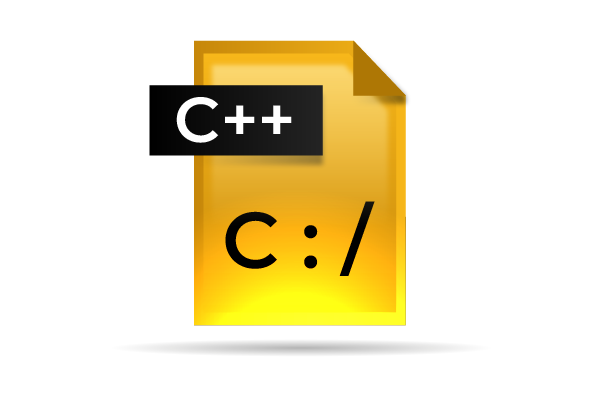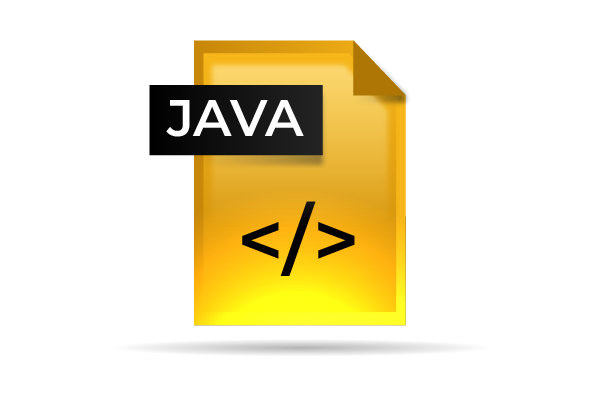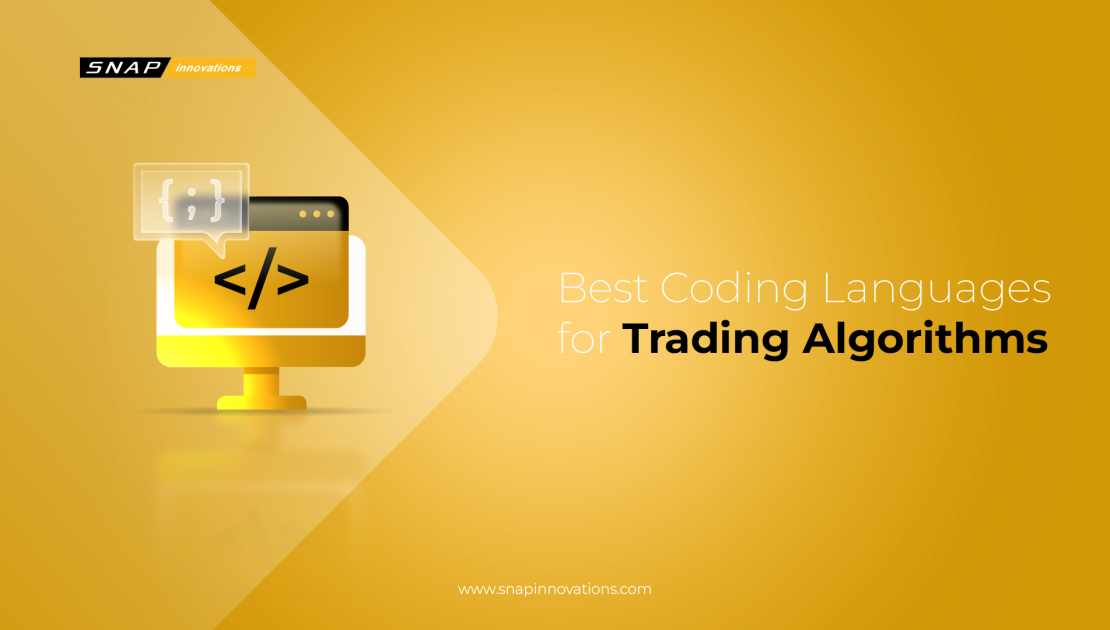In the dynamic world of financial markets, the use of trading algorithms has become increasingly prevalent, revolutionizing how trades are executed and strategies are implemented. At the heart of these sophisticated trading mechanisms are coding languages, serving as the foundational tools that enable traders and developers to create, test, and deploy algorithms efficiently. This comprehensive guide explores the best coding languages for trading algorithms, shedding light on their unique features, advantages, and the specific scenarios where they excel. Whether you’re a seasoned trader looking to refine your algorithmic strategies or a newcomer eager to dive into the world of algorithmic trading, understanding the nuances of these languages is crucial in navigating the complex landscape of the financial markets.
The realm of trading algorithms is intricate, blending the precision of mathematics with the unpredictability of market behavior. The choice of coding language can significantly impact the performance, speed, and reliability of trading algorithms. As we delve into this topic, we’ll uncover the characteristics that make a coding language ideal for trading purposes, including execution speed, community support, integration capabilities, and the ability to handle large datasets swiftly. By grasping these fundamental aspects, traders and developers can make informed decisions, ensuring their trading algorithms are not only effective but also aligned with their overall trading strategy.
Embarking on this journey requires a blend of technical acumen and an understanding of the financial markets. The coding languages we’ll discuss are not just tools but gateways to a world where data, strategy, and computational power converge to create opportunities for profit and innovation. As we navigate through this guide, remember that the best coding language for trading algorithms is one that aligns with your specific needs, goals, and the market conditions you intend to navigate. Let’s begin this exploration and uncover the coding languages that stand at the forefront of algorithmic trading.
Read More: Compression Trading: Strategies for Efficiency in Financial Markets
What are Coding Languages for Trading Algorithms?
Coding languages for trading algorithms are specialized tools that enable traders and developers to design, backtest, and execute trading strategies systematically. These languages form the backbone of algorithmic trading systems, translating complex trading strategies into executable code that can interact with market data in real-time. The choice of coding language is pivotal, as it influences the efficiency, speed, and accuracy of the algorithms.
The architecture of trading algorithms involves various components, including data retrieval, signal generation, risk management, and execution modules. Coding languages must be robust and versatile enough to handle these components seamlessly. They should offer capabilities for statistical analysis, machine learning, and integration with trading platforms and databases. The goal is to process vast amounts of data, identify trading opportunities, and execute trades with minimal latency.
In the realm of trading algorithms, performance is paramount. Coding languages are evaluated based on their execution speed, ability to handle concurrent processes, and compatibility with advanced mathematical models. Moreover, the support from a vibrant community of developers, availability of libraries and tools, and ease of debugging and testing are also crucial factors. These languages are not just about writing code; they are about creating a reliable and efficient ecosystem that can adapt to the ever-changing market dynamics.
Python: The Versatile Giant in Trading Algorithms
 Python has emerged as a frontrunner in the world of trading algorithms, renowned for its simplicity, versatility, and powerful libraries. It’s a high-level language that abstracts complex details, allowing traders and developers to focus on the core aspects of their strategies without getting bogged down by intricate programming nuances. Python’s syntax is clean and intuitive, making it an excellent choice for beginners and experts alike.
Python has emerged as a frontrunner in the world of trading algorithms, renowned for its simplicity, versatility, and powerful libraries. It’s a high-level language that abstracts complex details, allowing traders and developers to focus on the core aspects of their strategies without getting bogged down by intricate programming nuances. Python’s syntax is clean and intuitive, making it an excellent choice for beginners and experts alike.
One of the key strengths of Python lies in its extensive ecosystem of libraries. Libraries such as NumPy, pandas, and scikit-learn provide robust tools for data analysis, numerical computations, and machine learning, which are integral to developing sophisticated trading algorithms. Moreover, Python’s compatibility with various data sources and APIs allows for seamless data ingestion and real-time data streaming, a crucial aspect for algorithmic trading.
Python’s community support is unparalleled. A vast network of developers and traders contributes to a rich repository of resources, including pre-built algorithms, frameworks, and educational materials. This community-driven environment fosters innovation and continuous improvement, ensuring that Python remains at the cutting edge of algorithmic trading technology.
However, it’s worth noting that while Python excels in flexibility and ease of use, it may not match the execution speed of lower-level languages like C++ or Java. But for many traders, the trade-off is well worth it, considering Python’s comprehensive capabilities and the productivity gains it offers. The language’s ability to integrate with other languages and platforms also allows traders to balance flexibility with performance, making Python a top contender in the realm of trading algorithms.
C++: The Speed Maestro in High-Frequency Trading
 C++ stands out in the high-frequency trading (HFT) arena, where execution speed is critical. Known for its high performance and control over system resources, C++ enables traders to design algorithms that can process transactions in microseconds. The language’s efficiency stems from its low-level capabilities, allowing direct interaction with hardware and minimal overhead in program execution.
C++ stands out in the high-frequency trading (HFT) arena, where execution speed is critical. Known for its high performance and control over system resources, C++ enables traders to design algorithms that can process transactions in microseconds. The language’s efficiency stems from its low-level capabilities, allowing direct interaction with hardware and minimal overhead in program execution.
The precision and control offered by C++ are particularly beneficial for strategies that require intricate optimizations and real-time decision-making. It allows developers to fine-tune their algorithms, ensuring minimal latency and maximum throughput. This level of control, however, comes with increased complexity. C++ demands a deeper understanding of programming concepts and system architecture, making it more challenging for beginners.
C++ excels in scenarios where deterministic execution time is crucial. Its ability to manage memory and system resources effectively ensures consistent performance, a key requirement for HFT strategies. The language’s robust standard library and support for advanced algorithms and data structures further enhance its suitability for complex trading systems.
Despite its steep learning curve, C++ remains a popular choice for trading firms that prioritize speed and efficiency. The language’s capacity to handle high volumes of data and transactions at unparalleled speeds makes it an invaluable asset in the high-stakes world of HFT. For traders and developers who can navigate its complexities, C++ offers a powerful tool to stay ahead in the fast-paced trading environment.
Java: Balancing Performance and Versatility
 Java strikes a balance between performance and versatility, making it a favored choice in the trading algorithm domain. Its platform-independent nature ensures that algorithms written in Java can run on any system with a Java Virtual Machine (JVM), offering remarkable flexibility and scalability. Java’s object-oriented approach simplifies the development of complex trading systems, allowing for modular and maintainable code.
Java strikes a balance between performance and versatility, making it a favored choice in the trading algorithm domain. Its platform-independent nature ensures that algorithms written in Java can run on any system with a Java Virtual Machine (JVM), offering remarkable flexibility and scalability. Java’s object-oriented approach simplifies the development of complex trading systems, allowing for modular and maintainable code.
Performance-wise, Java is often considered a middle ground between Python and C++. While it may not match the raw speed of C++, Java’s Just-In-Time (JIT) compiler ensures efficient execution, making it suitable for strategies that require a balance of speed and complexity. Additionally, Java’s extensive standard library and robust ecosystem of tools and frameworks streamline the development of sophisticated algorithms.
Java’s strong memory management and garbage collection mechanisms reduce the risk of memory leaks and other issues, enhancing the stability and reliability of trading applications. Its comprehensive set of APIs and support for network programming also make it ideal for developing distributed trading systems and integrating with various data sources and trading platforms.
For traders and developers seeking a language that offers a blend of performance, versatility, and ease of use, Java presents a compelling option. Its widespread adoption in the financial industry, coupled with strong community support and continuous improvements, ensures that Java remains a relevant and powerful tool in the world of algorithmic trading.
R and MATLAB: Specialized Tools for Statistical Modeling
R and MATLAB stand out as specialized tools for statistical modeling and analysis, essential aspects of developing trading algorithms. These languages are particularly favored for strategies that heavily rely on statistical methods, data analysis, and visualization. R, with its vast array of packages for statistical computing, and MATLAB, known for its powerful mathematical and engineering capabilities, are indispensable in the quant trader’s toolkit.
R’s strength lies in its comprehensive suite of packages for time series analysis, econometrics, and machine learning. The language’s data handling capabilities and sophisticated statistical functions make it ideal for exploring and modeling financial data. Additionally, R’s rich visualization tools enable traders to analyze trends, patterns, and relationships in data, providing valuable insights for strategy development.
MATLAB, on the other hand, excels in numerical computing and algorithm development. Its intuitive syntax and built-in functions for mathematical operations simplify the process of modeling complex trading strategies. MATLAB’s integrated development environment and toolboxes for financial engineering and machine learning further enhance its appeal to traders and quants.
While R and MATLAB may not be the primary choices for executing trades due to their speed limitations, they are invaluable in the research and development phase of trading algorithms. Their capabilities in data analysis, modeling, and simulation are unmatched, making them critical tools for backtesting and refining trading strategies before deployment in real-time trading environments.
For traders specializing in quantitative analysis and those who prioritize statistical rigor in their strategies, R and MATLAB offer the perfect blend of functionality and sophistication. Their role in the algorithmic trading ecosystem is undeniable, complementing other high-performance languages and providing the analytical firepower needed to develop winning trading strategies.
Read Next: Solana Virtual Machine: A Comprehensive Guide
Conclusion
In the diverse landscape of algorithmic trading, the choice of coding language is a critical decision that can shape the success of a trading strategy. From Python’s versatility and ease of use to C++’s unparalleled speed, Java’s balanced approach, and the specialized capabilities of R and MATLAB, each language offers unique advantages. The best coding language for trading algorithms depends on the specific requirements of the strategy, including factors like execution speed, data analysis needs, and the complexity of the trading logic.
As we conclude this exploration, it’s important to remember that the effectiveness of a trading algorithm is not solely dependent on the coding language but also on the trader’s understanding of the markets, the quality of the data, and the robustness of the strategy. Continuous learning, experimentation, and adaptation are key to staying relevant in the ever-evolving world of algorithmic trading. Whether you’re a seasoned trader or starting out, the journey toward mastering algorithmic trading is a continuous process of learning, analyzing, and refining.
In the diverse landscape of algorithmic trading, selecting the right coding language is pivotal, acting as the backbone of any trading strategy. Python, with its simplicity and extensive libraries, is ideal for those prioritizing versatility and ease of use. It allows traders to easily test ideas and handle large datasets, making it a popular choice for data-intensive strategies. On the other hand, C++ is the go-to for high-frequency trading platforms due to its unparalleled execution speed, offering the precision and efficiency needed in environments where every millisecond counts.
Java strikes a balance, offering robust performance and a level of simplicity, making it a preferred choice for traders looking for a middle ground between the ease of Python and the speed of C++. Meanwhile, R and MATLAB, though more niche, provide specialized functionalities for statistical analysis and mathematical modeling, catering to strategies heavily reliant on complex quantitative models.
However, it’s crucial to acknowledge that the effectiveness of a trading algorithm transcends the choice of coding language. It is equally, if not more, dependent on the trader’s in-depth understanding of the markets, access to high-quality, timely data, and the overall robustness and adaptability of the trading strategy. Market conditions are perpetually changing, and an algorithm that succeeds today may not necessarily do so tomorrow. Hence, traders must embrace continuous learning, regularly update their strategies in response to market dynamics, and always be prepared to pivot when the situation calls for it.
In conclusion, while the choice of coding language is a fundamental step in the development of trading algorithms, it’s the combination of the right tools, a solid strategy, robust data, and a deep understanding of the market that ultimately leads to success in the intricate world of algorithmic trading. As technology and financial markets continue to evolve, staying adaptable, informed, and responsive to change is paramount for any trader aiming to thrive in this challenging yet rewarding field.

